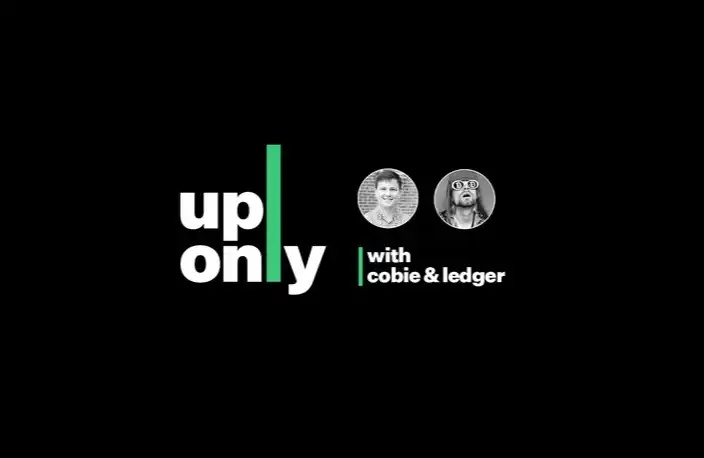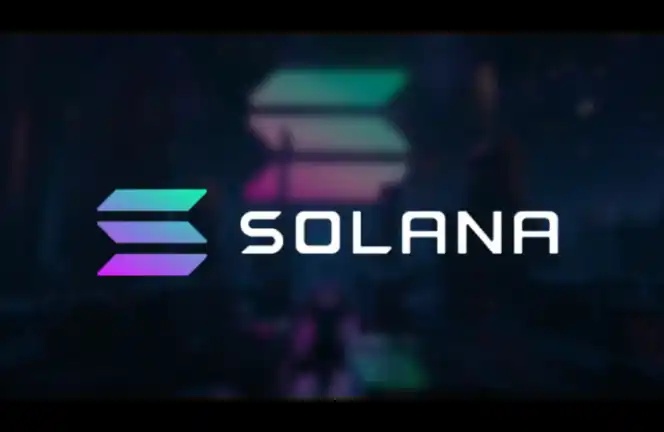Old Tree Rejuvenation: Summer Counterattack of DeFi Veteran Projects
The DeFi market is experiencing a long-awaited "Veteran Revival Wave."
As of now, the total value locked (TVL) in the DeFi market has risen to $1.97 trillion, just a step away from the all-time high of $2.06 trillion. More importantly, the leader of this rebound is not a newly emerged project but a group of "veterans" who once shone brightly during DeFi Summer.
From the early speculative demand to the current "old tree rejuvenation," behind the collective growth of the DeFi market lies the accelerated entry of institutional funds (RWA, compliant lending, 401k crypto investment), the resurgence of retail demand for on-chain returns in a bull market, and new usage scenarios brought about by technological iterations. The return of veterans not only reflects market confidence but also marks the prelude to a new round of DeFi competition.
In this article, BlockBeats has compiled the main reasons for the recent skyrocketing coin prices and TVL of DeFi "veteran players" such as Aave, Uniswap, Euler, Pendle, Fluid, and Spark.
AERO: Violent Rebound Supported by Coinbase
Aerodrome Finance (AERO) is a decentralized exchange (DEX) born in 2023 and deployed on the Base chain, operating on an automated market maker (AMM) model, with vote-lock governance and a robust liquidity incentive mechanism. It adopts a highly community-friendly design, with an anonymous team that did not accept venture capital and has no private sale lockups, maximizing the alignment of interests with users. It achieved a financial TVL of over $200 million within 72 hours of launch, and later in 2024, its total trading volume exceeded $1 billion, with Slipstream contributing 85% of it. As of June 2025, AERO's cumulative trading volume has surpassed $100 billion, firmly establishing its position as a core part of the Base DeFi ecosystem.

Recently, AERO has shown a strong uptrend: On August 9, boosted by the news of Coinbase's native DEX functionality going live, AERO surged for several days, reaching a high of $1.23, with a 7-day increase of about 47%. It currently has a market value of approximately $9.78 billion and is a popular project token in recent times.

In addition to Coinbase integrating Base native asset DEX trading functionality in its App, Aerodrome became one of the first supporters, with AERO's price surge possibly also attributed to the launch of the "Pool Launcher" tool. This tool allows projects to create their own liquidity pools and receive related transaction fees, attracting more Base native projects to join the ecosystem.
Currently, Aerodrome's TVL is approximately $5.8 billion, almost entirely coming from the Base chain. The 24-hour DEX trading volume is close to $9.5 billion, with a total trading volume of $205 billion in the past 30 days. In terms of revenue and investment, Aerodrome's annualized fee income is estimated to be around $1.93 billion, with revenue of about $15.85 million in the past 30 days. The cumulative reward incentive payout has reached $7.06 billion, indicating a strong liquidity incentive focus.

Currently, Aerodrome has established a leading trading and incentive mechanism on the Base chain, becoming a DeFi liquidity hub. The Coinbase integration has opened a window to a broader user base, serving as the catalyst for capital and liquidity concentration explosion.
While the upward trend is evident, caution is advised in the short term due to high incentive spending and overheated technical indicators. In the medium to long term, attention can be paid to whether its ecosystem expansion continues, whether partner projects are implemented, whether Coinbase continues to expand its support range, ultimately deciding whether it can return to its all-time high ($2.32) or continue to surge.
Fluid's Ambition to Flip Uniswap
Fluid is a DeFi protocol that integrates DEX (decentralized exchange), lending, and Vault systems, achieving high capital efficiency and liquidity reusability through its unique Liquidity Layer. Launched on Instadapp and reshaped in 2023, Fluid enables assets to freely switch use cases within the liquidity layer without multiple lock-ins, significantly reducing fragmentation costs and increasing returns. Its Smart Debt and Smart Collateral model provides greater capital efficiency for liquidity providers and borrowers.
In the recent DeFi market, Fluid has become one of the key players: on August 4th, Fluid's daily on-chain trading volume briefly surpassed Uniswap, reaching approximately $15 billion, driving a 14.4% price surge for $FLUID on the same day. As of now, Fluid has risen to $7.38, with a 36.1% increase in the past 7 days and a 51% increase in the past 30 days.

The Upsurge of Fluid may be Driven by the Following Four Points:
1. Breaking Fragmentation with Liquidity Layering
Fluid is going live on chains like Arbitrum and Solana, introducing a lighter Lite version while also supporting the DEX v2 upgrade. This move helps increase yield and user coverage. Fluid's Liquidity Layer enables liquidity sharing, where assets can serve multiple purposes with a single lockup, driving rapid fund inflow and trading.
2. Rapid Surge in Trading Market Share
In a short period, Fluid has surpassed Uniswap, capturing over half of the stablecoin trading market share. This directly strengthens its ecosystem through both utility and sentiment.
3. Renewed Trader Confidence
DEX daily trading volumes hit a new high, with token prices seeing a short-term rise. This indicates a higher market acceptance of the Fluid model, with liquidity provisioning efficiency receiving recognition.
4. Long-term Bullish Expectation for Buyback Mechanism
The team has made it clear that a buyback will be initiated once the annual revenue reaches $10 million. This provides mid- to long-term support for the token's value, attracting investors to accumulate during price dips.
The platform's total trading volume has exceeded $7–$8 billion, with a monthly TVL growth rate of around 27%, totaling approximately $838 million. Since 2025, Fluid's deposits have grown by nearly 40%, surpassing $1.4 billion, and expanding to multiple chains like Arbitrum and Solana, along with plans for DEX Lite. As of August 3, Fluid commanded a stablecoin swapping market share of 55.5% on Ethereum, Base, Arbitrum, and Polygon, far surpassing Uniswap (25.7%) and Curve (13.4%).

Overall, Fluid has emerged as a "rising star" in DeFi, swiftly returning to the spotlight through its unique Liquidity Layer, robust trading data, and multi-chain expansion strategy, setting a new standard for stablecoin trading in DeFi. While its short-term performance is impressive, several risk factors need to be monitored: the possibility of a short-term adjustment in FLUID remains to be seen, and the ecosystem's adoption and user stickiness—whether subsequent projects can truly be built on top of Fluid's liquidity layer—are key drivers of sustainable growth. If the upcoming DEX v2 and Lite versions are successfully launched, driving revenue past crucial milestones, not only can the buyback mechanism be initiated, but it can also further enhance user stickiness and market valuation, propelling Fluid to become the new benchmark in stablecoin trading.
Uniswap v4 TVL Breaks $1 Billion Again
Uniswap is a veteran in the DeFi world, and its v4 version was officially launched in early 2025, spanning 12 chains including Ethereum, Arbitrum, Base, Polygon, BNB Chain, and Unichain. The update introduced the "Hooks" feature, allowing liquidity pools to have dynamic fees, on-chain limit orders, TWAP, and other custom logics. Through a Singleton architecture and Flash Accounting technology, gas costs have been reduced by over 99%. V4 retains the capital efficiency of v3 while enhancing flexibility and programmability, becoming a key part of DeFi's innovative infrastructure.
Recently, Uniswap has shown a strong performance: as of now, the UNI price is $11.27, up around 31% in the last 30 days, with a market cap back above the $67 billion range.

Factors contributing to UNI's rise include:
1. Strong TVL Rebound
v4 quickly surpassed a $1 billion TVL, providing solid emotional support for the UNI price and demonstrating a warming trend in the DeFi ecosystem.
2. Capital attracted by Hooks innovation
Programmable liquidity strategies have enabled various projects (such as Bunni and EulerSwap) to rise rapidly, driving user engagement and deepening operations.
3. Prominent role of Unichain expansion
The addition of new networks has brought lower costs and a more efficient experience, creating a new growth engine for Uniswap and further increasing activity.
4. Technological iterations and institutional upgrades
v4 has introduced smart wallet support, cross-chain integrations (like Hyperbridge and LayerZero), and over 640 million swap transactions, building a more comprehensive trading infrastructure.

Currently, Uniswap v4 TVL has surpassed the $1 billion milestone. In terms of total trading volume, Uniswap has exceeded $110 billion, making it a hub of DeFi liquidity. Unichain accounts for approximately 75% of the daily trading volume, with Ethereum holding around 15–20%. Regarding Hooks deployment, over 2,500 Hook liquidity pools have been launched, with both Bunni and EulerSwap having accumulated transaction volumes exceeding $1 billion.
Despite Fluid shining brightly in the market, Uniswap remains a stable powerhouse: its v4 version continues to consolidate its core position in DeFi through technological innovation and ecosystem expansion. Rapid TVL growth and rich Hooks applications are crucial foundations of its revival. However, technical indicators such as the RSI are overbought, indicating potential profit-taking pressure in the short term.
Whether it can continue to rise in the future depends on: whether Hook strategy pools can bring new growth; deepening cross-chain integration to enhance ecosystem collaboration; and if Unichain can maintain its cost advantage and attractiveness, potentially challenging the $13–$14 range.
Euler: "Phoenix Reborn" After a Hack
Euler Finance is a modular lending protocol on Ethereum known for its risk layering, flexible asset permission, and high capital efficiency. It supports access to any ERC-20 asset, as well as leverage position management and a complex liquidation protection mechanism. Following a devastating hack in 2024, the project swiftly regained "trust high ground" and became one of the core players in the resurgence of the DeFi lending sector.
Recently, $EUL reached a new all-time high, with the price briefly surpassing $15, marking an increase of over 950% from the low point at the end of 2023. The market cap also approached nearly $300 million. Despite a slight pullback, the price is currently stable in the $11.8–$13 range.

The reasons behind Euler's rise include:
1. Rebirth from the ashes
Euler quickly rebooted after the hack, winning community trust and capital inflows, providing a solid foundation for its sharp rebound.
2. TVL and lending depth rebounding in tandem
An exceptional growth in TVL, a surge in active loans, reflecting strong user borrowing demand and protocol momentum recovery.
3. EulerSwap complementing the ecosystem
After launching its native DEX, Euler created a self-circulating liquidity path, enabling staking, lending, and trading to achieve closed-loop synergy.
4. Increased support from mainstream platforms
Recent news indicates that Coinbase will support EUL, with the announcement driving a one-day price increase of around 5.7%, reflecting increased market recognition.

The latest data shows Euler TVL has reached $1.2 billion, having largely overcome the impact and challenges following the hacking incident. Euler has launched its native DEX—EulerSwap, with a total trading volume exceeding $1 billion since its launch in May. Lending Activity: The active loan amount has recently exceeded $1 billion, compared to only about $240,000 at the end of 2024, showing a significant increase.
Euler's recovery is a typical "rise from the ashes" story: from the dilemma after the hack, to a rapid restart, explosive TVL, product innovation, and gradual recovery of market cap and market attention, demonstrating the resilience of old DeFi projects in trust and governance.
However, it is worth noting: the pullback pressure after the high price; whether EulerSwap can maintain trading depth, whether the lending category will expand, will determine whether it can sustain its growth; whether more capital platforms will continue to support it, such as deepening support from Coinbase, more CEX listings, will enhance liquidity and market value foundation. If Euler can indeed maintain TVL growth, loan activity, and DEX development momentum in the future, it is expected to return to a higher valuation range and continue to write the classic "old tree blooms anew" chapter.
Pendle: TVL and Price Surge Driven by Boros
Pendle is a DeFi protocol that allows users to "trade future yield," with the core mechanism of splitting any yield-bearing asset into "Yield Tokens" and "Principal Tokens," allowing users to freely trade future yield. Pendle V3 introduced the Boros platform to create advanced yield trading tools and has become a core infrastructure of Yield-trading.
Pendle has recently shown impressive performance: the price briefly surged to nearly $6, with a weekly gain of up to 46%, far exceeding the overall market trend.

The reasons behind Pendle's rise are:
1. Launch of the Yield Trading Platform Boros
After the launch of Boros, the BTC/ETH funding rate was converted into tradable assets (Yield Units), rapidly increasing user participation and capital inflow.
2. Cross-protocol Fusion Mechanism Optimizing Capital Efficiency
Through cross-ecosystem collaboration with Ethena, Aave, and Boros, Pendle has become an efficient yield strategy hub, with its PT-USDe strategy driving a significant increase in capital.
3. TVL and Yield Growth Boost Confidence
All-time high TVL and significant revenue increase provide strong support for the token and boost market sentiment.

On core data, Pendle's TVL reached a record high of $8.8 billion, mainly driven by a fund surge on the Boros platform. In the first two days of launch, over $1.85 million worth of BTC and ETH were deposited, Pendle's active addresses on Arbitrum doubled, attracting on-chain and institutional attention.
Simultaneously, protocol integrations drove a liquidity surge. Approximately 60% of the TVL is from USDe strategies (such as PT-USDe generating leverage and liquidity on Aave), creating a powerful "yield-loop" asset circulation mechanism.
Pendle has become a DeFi hotspot due to its unique yield trading mechanism and protocol integration strategy: the Boros platform injected strong momentum, causing both TVL and price to surge. However, caution is advised regarding short-term technical retracement risks and the concentration risk brought by the dominance of USDe. If Pendle can continue expanding Boros-supported assets (such as staking yields, sovereign bond yields) and drive overall protocol governance and ecosystem deep integration, it has the potential to sustainably challenge the $7–$8 range, stepping into a true "new chapter for an old project."
Lending Champion Reclaims Crown, Aave Gradually Institutionalizes
Aave is the top-tier lending protocol in the DeFi world, known for its non-custodial, modular design, and cross-chain support. Innovative features introduced by Aave, such as GHO stablecoin, Umbrella security mechanism, Aave Arc/Horizon, further cement its core position in DeFi's liquidity layer.
Recently, AAVE has shown remarkable performance: in mid-July, the price surged to a high of $330, rising approximately 24% within 7 days. While short-term pullback pressure exists at the market's high price, the overall trend is strong.

Aave's upward momentum is attributed to:
1. Capital Inflows and TVL Leadership
Aave still holds a dominant position in the lending market, with new users and funds continuously flowing in, providing a solid foundation for market confidence.
2. **Stablecoin GHO Performance Enhancement Value Proposition**
GHO's cross-chain expansion, sGHO, anti-GHO mechanisms, among others, bring multi-layered reward incentives to holders, enhancing ecosystem stickiness.
3. **Institutional Path Continuously Implemented**
Horizon, Arc, KYC compliance mechanisms make Aave a key entry point for institutional-grade DeFi lending.

Looking at other core data, Aave's Total Value Locked (TVL) has reached $380.4 billion, representing a 52% increase since the beginning of the year, accounting for nearly a quarter of the total DeFi TVL and dominating the lending market. Its native stablecoin GHO has a supply of $312 million. GHO's cross-chain expansion on Arbitrum and Base has facilitated revenue growth, with AAVE achieving a 22.97% return rate in the most recent rebalance cycle.
In terms of specific institutional partnerships, Aave has launched the Horizon project to drive the path for Real World Assets (RWA) and institutional usage and has partnered with Plasma to introduce a blockchain fund for institutions. Additionally, the Aave DAO has approved a white label scheme for the Kraken Ink chain.
As a veteran in the DeFi lending field, Aave remains resilient. Constantly breaking records in TVL and deposit size, expanding the functionality of GHO, steadily advancing institutional pathways inject strong momentum into its revival. However, AAVE's price faces a retracement pressure at high levels, with technical indicators like RSI nearing overbought levels, suggesting a potential short-term adjustment. Whether it can continue to lead the DeFi lending sector in the future depends on the progress of Aave V4's rollout, the effectiveness of the RWA channel implementation, and regulatory trends.
Spark: MakerDAO's Sharp Blade
The Spark Protocol (referred to as Spark), evolved from MakerDAO, has now been incorporated into the Sky ecosystem. It is an advanced on-chain capital allocator dedicated to efficiently deploying stablecoin capital in the billions to DeFi, CeFi, and RWA. Its core products include SparkLend (lending), Spark Savings (yield generation), and Spark Liquidity Layer (cross-chain liquidity allocation), among others.
Since the official airdrop and first listing of the SPK token on June 17, 2025, the market performance has been extremely impressive: the initial TGE issuance price was around $0.065. In the short term, the SPK price experienced significant volatility—dropping to a low of less than half of the issuance price (around $0.03), but then rebounding strongly, reaching a historical high of $0.18 on July 23. This surge saw an increase of over 400%. The current price is stable in the $0.12–$0.13 range, with a market cap close to $190 million and a 24-hour trading volume soaring to nearly $450 million.

The main factors driving the SPK token's rise may be the following four:
1. TVL Surge Boosts Sentiment
Since April, Spark's TVL has skyrocketed by 250%. This influx of capital directly boosted market confidence, rapidly driving up the SPK price and setting a new ATH.
2. Airdrop and Listing Heat Up Trading
Spark's launch was accompanied by a large-scale airdrop and listing on mainstream exchanges (such as Binance). Coupled with favorable mechanisms, this raised the initial market attention and price volatility.
3. Top-tier Funding and Technical Endorsement
Backed by the Sky (formerly MakerDAO) platform's $65 billion stablecoin reserve and a transparent mechanism at the core of capital deployment, Spark has been endowed with a strong foundation of stability.
4. Product Structural Integrity
Spark has a product matrix covering yield generation, lending, and cross-chain liquidity, meeting user needs comprehensively through SparkLend, Savings, and SLL.

As of the time of writing, Spark's total TVL has reached $74 billion. Previously, in July, the TVL reached a peak of $81 billion, ranking it as the sixth-largest DeFi platform. Among these, SparkLend manages around $47 billion, and SLL manages around $34 billion. Spark is rapidly reshaping the stablecoin and capital efficiency standards in DeFi. The resonance of TVL surge, airdrop sentiment, and Sky's endorsement has allowed SPK to achieve a legendary comeback of "old project, new life" in a short period.
However, at the same time, high volatility and initial profit-taking pressure persist. The price has now retraced by 30–40%, so caution is advised for a short-term market adjustment. The future strength will depend on whether the Spark ecosystem can continue to expand (such as through CeFi channels, RWA integration), governance activity, and SPK holder loyalty performance.
Welcome to join the official BlockBeats community:
Telegram Subscription Group: https://t.me/theblockbeats
Telegram Discussion Group: https://t.me/BlockBeats_App
Official Twitter Account: https://twitter.com/BlockBeatsAsia




 Forum
Forum Finance
Finance
 Specials
Specials
 On-chain Eco
On-chain Eco
 Entry
Entry
 Podcasts
Podcasts
 Activities
Activities
 OPRR
OPRR







